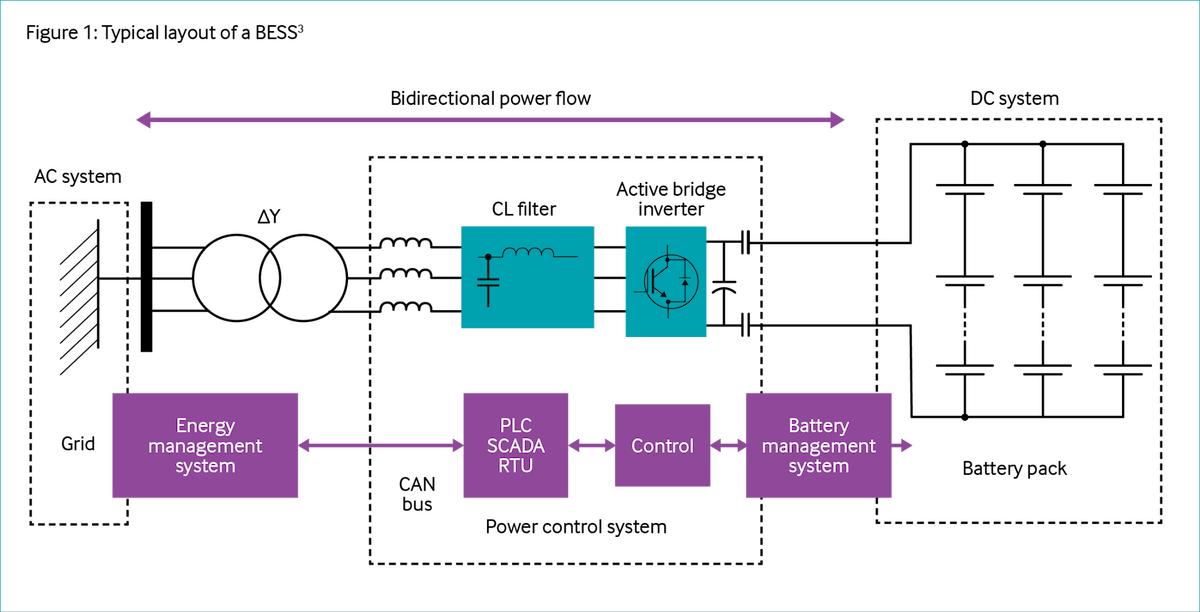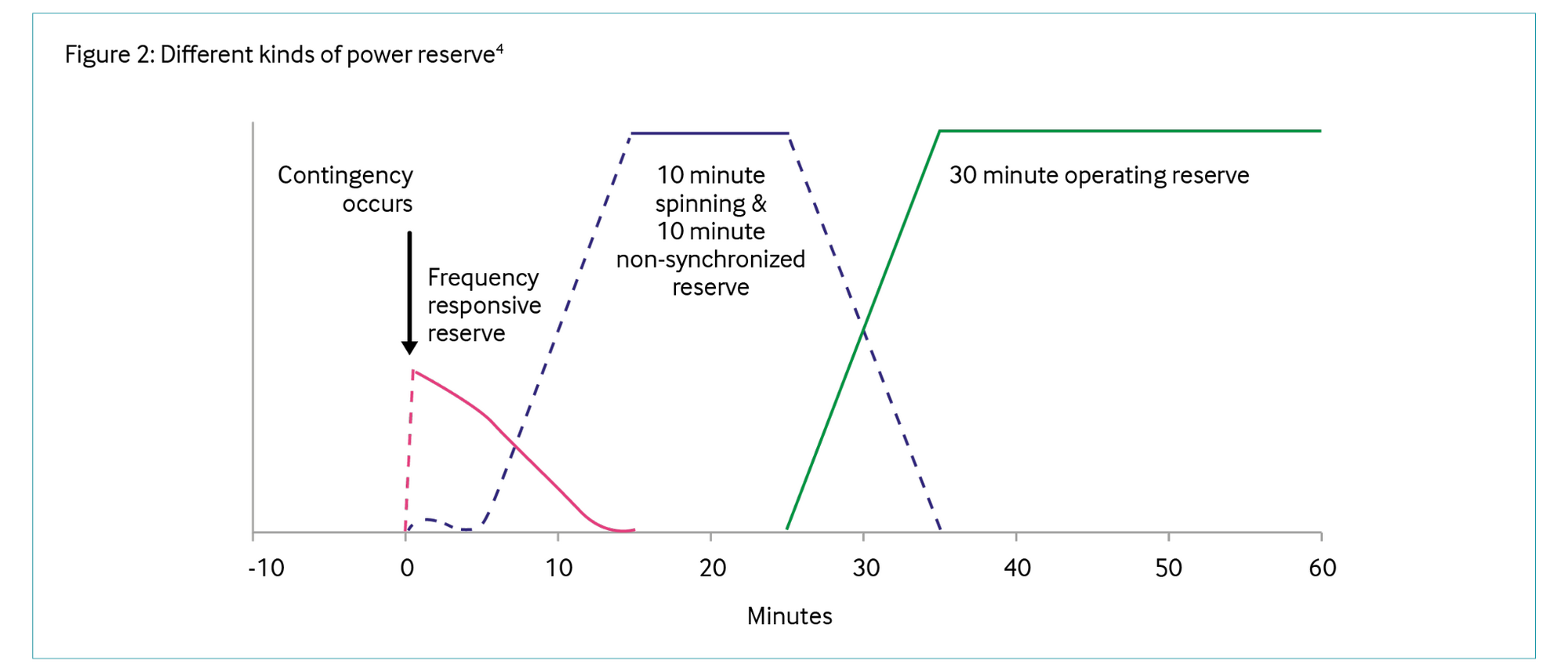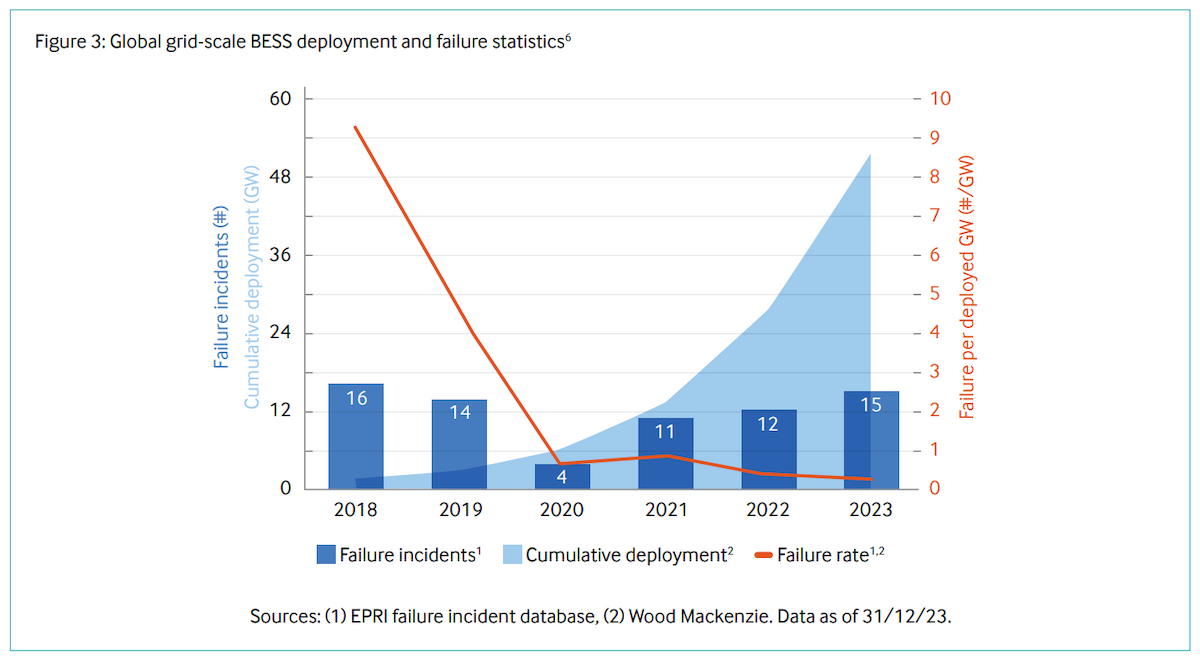Topic last reviewed: May 2025
Sectors: Downstream, Midstream, Upstream
Overview
Battery energy storage systems (BESS) use rechargeable battery technology, normally lithium ion (Li-ion) to store energy. The energy is stored in chemical form and converted into electricity to meet electrical demand. BESS technologies will support installations and businesses to overcome the energy trilemma to provide low carbon, affordable and reliable energy. BESS can help enable increased electrification of oil and gas facilities by improving onsite power generation efficiency and reliability and supporting the integration of intermittent renewable power from solar or wind. Key and unique features of BESS include1:
- Ability to store excess or low-cost electricity produced, and discharge during high-cost hours (time of use) to improve plant load factor or plant economics
- Immediate response to power demand fluctuations
- Lower carbon intensity of onsite generation, and store excess power to be used when required
- Less maintenance than rotating machinery
- Modular/turnkey/scalable solution
A BESS includes the following major elements:
- Battery modules supporting structure/ racking and containers
- Safety/fire suppression system
- Battery management system (BMS)
- Power conversion system (PCS) (bi-directional inverter)
- Energy management system (EMS)
- Transformer(s)
- Connection to the power grid or internal electric system
BESS can also act as a buffer and support system. Key roles include:
- Spinning reserve: provide immediate power when demand spikes or during a turbine/generator trip
- Primary power source support: in remote oil and gas operations where diesel or gas generators are the primary power source, BESS can store excess energy and provide backup power reducing generator run-time, improve fuel efficiency, and extend equipment life by reducing start/stop cycles. BESS can be used both in onshore and offshore settings, including both topside and subsea
- Offshore subsea applications: provide reliable subsea power for critical control systems and sensors. Offshore applications are still in relatively early stages of maturity; subsea BESS systems greater than 1 MWh are only now being piloted2
- Peak shaving: store excess energy generated during low-demand periods and discharge this energy during peak demand times, which is particularly beneficial for drilling rigs and completion sites that experience fluctuating power requirements. These systems help manage energy- intensive processes, such as rotating drill bits and powering surface equipment. The use of BESS can lead to improved operational flexibility and reliability. Systems can quickly respond to changes in energy demand, providing a stable power supply for critical operations. This responsiveness minimises interruptions that could lead to costly downtime and can reduce demand charges in cases where power is imported from a utility grid
- Energy shifting: store excess energy generated during low-demand periods for later use
- Ancillary services: for systems connected to the grid it helps maintaining grid operational stability and security. This is oken initiated as a separate commercial revenue stream for the asset
- Frequency regulation: quickly adjust output to stabilize the grid frequency
- Renewable source intermittency: use BESS to increase behind the meter capacity of solar PV or wind. By installing systems with nameplate capacity larger than the load of an upstream operation, a BESS can store the excess energy for use when the sun is not shining or the wind is not blowing. A BESS can also be used for energy arbitrage: e.g., generating low- cost solar power and then selling the excess to the grid to offset night-time purchases.


